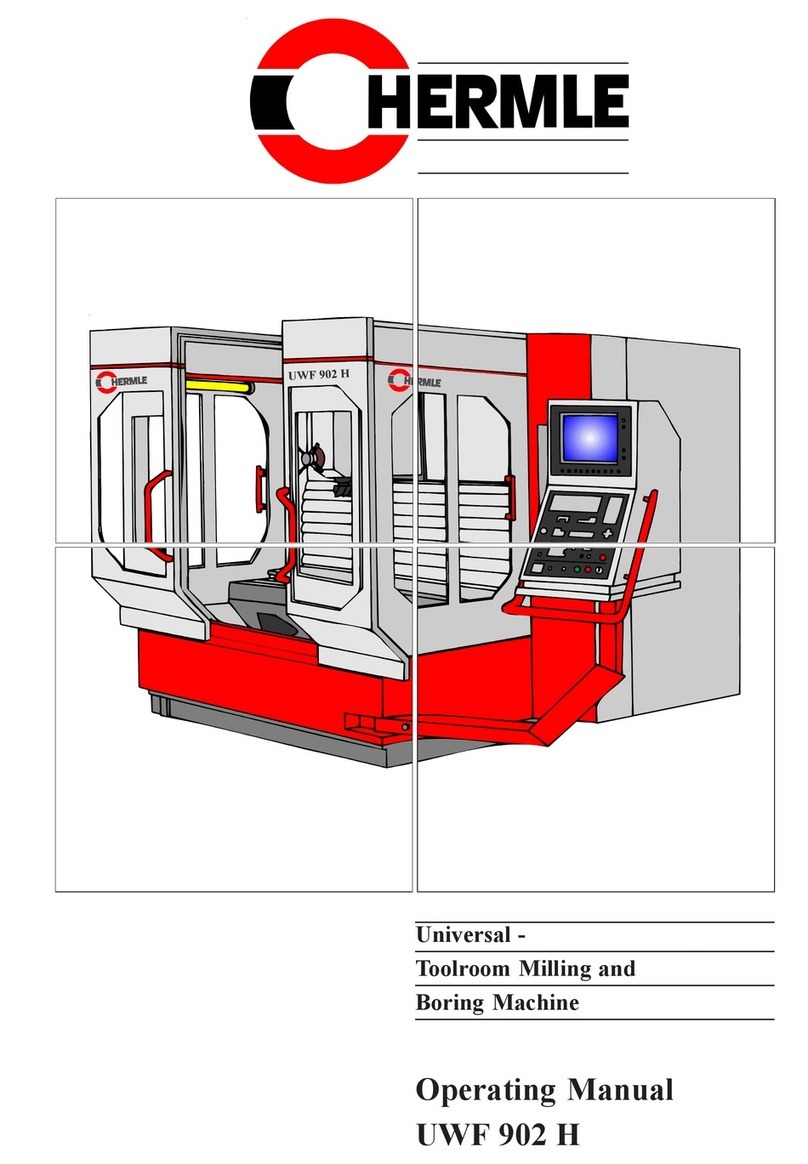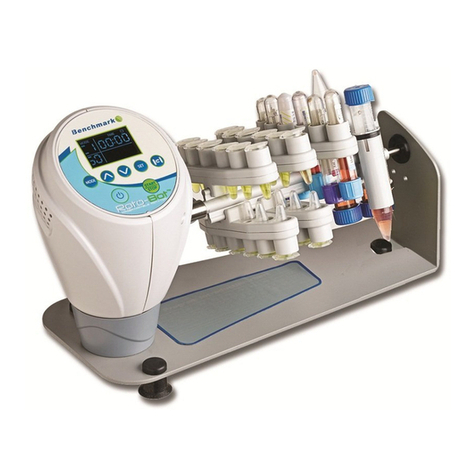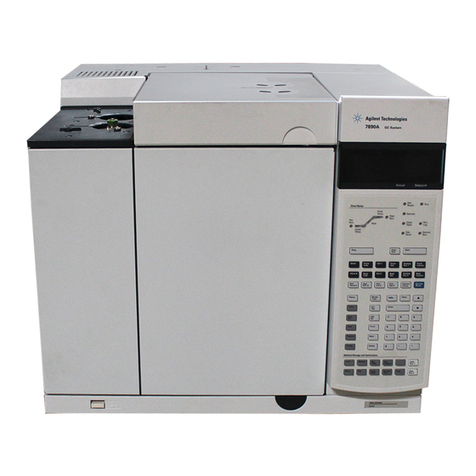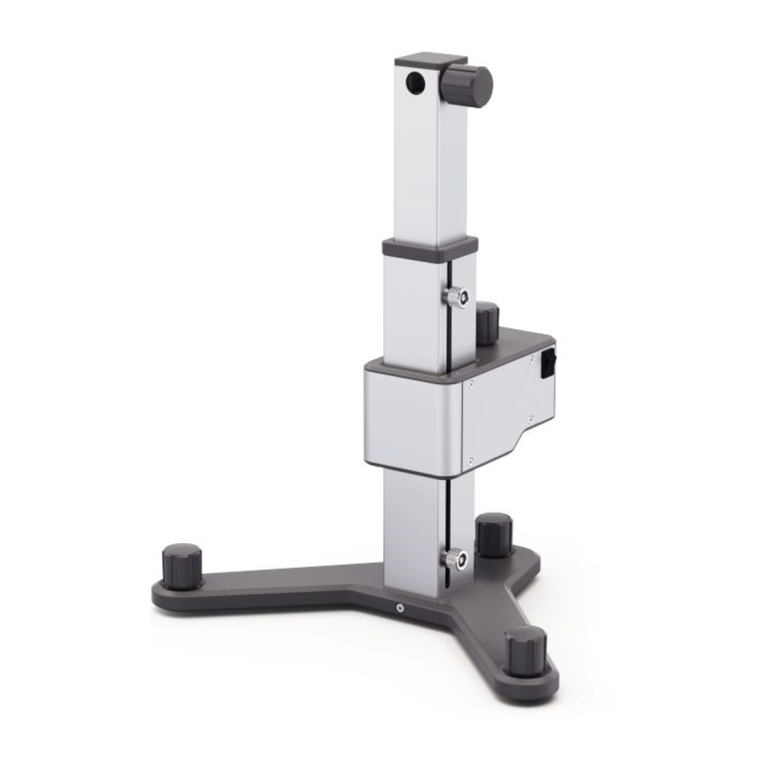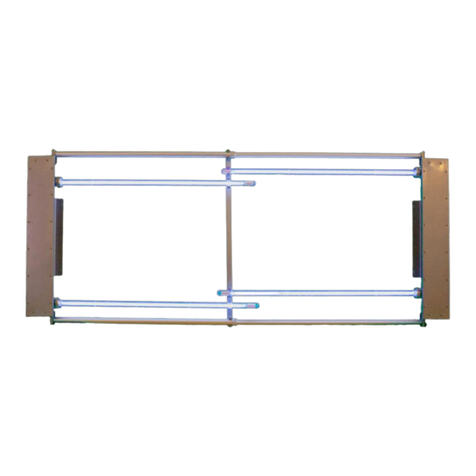PreeKem GT-400 User manual


2
GT-400 Vessels Operation Manual
Preface
Safety Declaration
Please read the entire manual carefully before operation. The operator needs follow up with the safety
declaration paragraph strictly. Otherwise PreeKem should not be responsible for all the accidents.
Symbol ATTENTION means danger exist, to remind you that you must pay
attention. Improper operation or failed to comply with the appropriate procedures
may result in equipment damage.
Symbol DANGER means danger exist , to remind you that you must pay attention.
Improper operation or failed to comply with the appropriate procedures may result
in injury or death.
ATTENTION
DANGER

3
Table of contents
Table of contents
Preface....................................................................................................................................................1
Safety Declaration...............................................................................................................................2
Table of contents.....................................................................................................................................3
GT-400 Vessels operation guide ............................................................................................................4
1 Safety instruction..................................................................................................................................5
2 Rotor introduction.................................................................................................................................7
2-1 Overview .......................................................................................................................................7
2-2 Technical Performance .................................................................................................................7
3 Rotor operation ....................................................................................................................................8
3-1 Turntable installation.....................................................................................................................8
3-2 GT-400 the vessel installation.......................................................................................................8
3-3 Install the digestion vessel into the cavity...................................................................................10
3-4 Uninstallation of digestion vessel................................................................................................11
3-5 Rinsing ........................................................................................................................................12
Hot rinsing......................................................................................................................................12
Complete rinsing............................................................................................................................13
Appendix 1: The standard operating procedures of the GT-400 vessels.............................................14

4
GT-400 Vessels Operation Manual
GT-400 Vessels operation guide

5
1 Safety instruction
1 Safety instruction
1.1 All the vessels and framework components must be dry and free of
particulate matter, drops of liquid or particles will absorb microwave energy,
causing localized heating which may char and damage vessel components,
leading to possible vessel failure.
1.2 Heating concentrated alkaline or salt solutions in vessel is prohibited
and the concentration solution should be no more than 10%, otherwise it will
cause precipitation of salts and formation of crystal deposits on vessel walls.
These crystal deposits will absorb microwave energy, causing localized
heating which may char and damage vessel components, leading to possible
failure.
1.3 To avoid the danger of explosion, perchloric acid is prohibited. Do not
singly heat high boiling point acids (concentrated sulfuric or phosphoric
acids) inside the vessels to avoid the temperature exceed the vessel
material’s melting point, resulting in the vessel damage.
1.4 Huge gas and heat will be generated during the digestion process of the
organic sample and the large size of sample, which may possibly cause the
fierce reaction, resulting in the pressure rising speed exceed the response
speed of the pressure-release module. The explosion will occur when the
pressure exceed vessel’s programmed limit.
1.5 Organic sample treatment: Generally the unsealed vessels containing the
organic sample and the digestion acid solvent will be pretreated, based on
the sample.
(1) Before placing the vessels into the cavity, operators shall put them inside
the fume hood for several minutes or hours, slightly shake it to release small
amount of bubble or gas.
(2) Before placing the vessels into the cavity, operators shall put the vessels
on the special heating instrument to release some gas and heat (the control
temperature should not exceed 150°C). After the above pretreatment, setting
the digestion process, starting from low temperature (100-120°C) to middle
temperature, finally adjust to high temperature.
The above steps not only enhance the safety but also are good for sample
digestion.
1.6 All the vessels should be filled with the same weight, volume of sample
and reagent also need to share the same starting temperature.
1.7 Check the turntable rotation prior to start the microwave heating, make
sure the turntable can be rotated, otherwise will result in explosion caused
by localized over temperature.
ATTENTION
DANGER
ATTENTION
DANGER
ATTENTION
DANGER
ATTENTION

6
GT-400 Vessels Operation Manual
1.8 All the digestion vessels should be cool down to 80°C prior to place them
into the fume hood. Slowly loose the pressure-release module, wait till the
gas completely released, otherwise the acid solution will spill to operator
and cause the injury.
1.9 The components of the vessel are easily prone to aging because of the
repeated heating and cooling which cause the expansion and the
contraction by themselves, together with the acid corrosion. Especially the
sleeve tends to be short lifespan, thus when crack occurred or crack
increasing, the sleeve has to be scrapped, otherwise explosion may occur.
1.10 The material of the sample cup is TFM, which melting point is 300°C
under common pressure. If place the sample into hot block to heat, the hot
block should be equipped with over temperature insurance.
1.11 The vessels contained with sample and the acid solution should be
operated as soon as possible, when the digestion completed the sample
should be taken out in time , the vessel sleeve and the seal lid will possibly
be damaged by acid leakage if the sample stays too long in the vessel.
1.12 Operation over the maximum working temperature (200°C) is prohibited.
1.13 The number of vessels should be applied more than 8 for every batch,
and should be put on the inner circle of turntable as priority.
1.14 The samples which not suit for air-tight microwave digestion are
prohibited. Please refer to the instrument operation manual “Samples
prohibited for air-tight microwave digestion system”. The GT-400 is a high-
throughput digestion vessel, if the operator is unclear about the type of the
range of the sample, please consult with the engineer for unknown samples.
DANGER
ATTENTION
ATTENTION
ATTENTION
DANGER
ATTENTION
DANGER

7
2 Rotor introduction
2 Rotor introduction
2-1 Overview
The GT-400 is a middle pressure vessel, which includes the anti-corrosion sample
cup, the seal lid and the sleeve which can hold the horizontal pressure. The GT-
400 is designed for pretreatment for various types of samples. At most 40 GT-400
vessels can be installed for each batch. The working temperature for GT-400 is
between 0-200°C, the pressure will be automatically released when pressure
exceed 2MPa.
Figure 1: GT-400 Vessels
2-2 Technical Performance
Inner vessel material: TFM
Sleeve material: PEEK
Digestion vessel volume: 60mL
Maximum working pressure: The pressure will auto-released when pressure over
2MPa
Maximum working temperature: 200°C

8
GT-400 Vessels Operation Manual
3 Rotor operation
3-1 Turntable installation
Related components:
Instrument mainframe
Half-coupling (26ca002)
40 vessels turntable assembly (26tj222)
Figure 2: Turntable installation scheme
Procedure:
1. Open the door prior to the turntable installation.
2. Insert the half-coupling (26ca002) into the central hole of the bottom of the
cavity.
3. Install the turntable into the cavity. Align the central hole of the turntable with the
coupling shaft.
After installation, the turntable can be leaved in the cavity. It is not required
to install at every time of operation.
The Infrared temperature sensor which is installed out the bottom of the
cavity should be cleaned for every week. Use the cotton cloth or the cotton
ball to clean it, if the stain can’t be cleaned easily, a little of pharmaceutical
alcohol can be applied. If the instrument hasn’t been used for a long time,
the camera should be cleaned before operation.
3-2 GT-400 the vessel installation
Related components:
Seal lid (26tj263)
Seal plug (26ca306)
Sample cup (26ca307)
Sleeve (26tj262)
ATTENTION
ATTENTION

9
3 Rotor operation
Figure 3: GT-400 Digestion vessel
Procedure:
1. Weigh the sample by balance and place it into sample cup.
Place the sample to the bottom of the sample cup and avoid adhering to the
wall of the sample cup.
For unknown sample the weight should be controlled less than 0.1g,
avoiding the explosion caused by fierce reaction.
The sample cup is slender and can easy to fall down.
2. Place the sample cup contained with sample into the fume hood, adding a
suitable amount of acid solution into the sample cup and immersing the sample.
Slightly shake the sample cup or stir it to make it evenly dispersed. If needed, the
sample cup loaded with sample and acid solution can be heated on the hot block
for a certain time (15-30min).
Observe if violent reaction occurs after sample is dispersed in the solvent. If
the reaction is too violent, please DO NOT close the seal plug until the
reaction almost completes.
ATTENTION
DANGER
ATTENTION
DANGER

10
GT-400 Vessels Operation Manual
The volume of solvent added should be in the range of 3-15mL.
3. Close the sample cup with seal plug.
4. Put the sample cup into sleeve.
5. Screw the seal lid tightly.
3-3 Install the digestion vessel into the cavity
Related components:
GT-400 Digestion vessel (26tj261)
40 vessels turntable assembly (26tj222)
Procedure:
1. Check the Infrared temperature sensor camera inside the cavity, ensure this
area is dry and clean.
Before use the GT-400 digestion vessels, the temperature sensor assembly
and air-guide tube assembly should be uninstalled.
2. Install the digestion vessel onto the turntable.
The digestion vessel should be placed on inner circle of turntable as priority
and should be installed not less than 8.
The placement of digestion vessel should strictly follow the bellowing placing
diagram.
Sample
Vacancy
8
vessels
12
vessels
16
vessels
20
vessels
DANGER
ATTENTION
DANGER

11
3 Rotor operation
24
vessels
28
vessels
32
vessels
36
vessels
40
vessels
3-4 Uninstallation of digestion vessel
The digestion vessel can be taken out after the temperature is cooled down to
80°C. The operators should follow the steps as below to operate after taking out
the digestion vessel. Misoperation will cause the injury by pressure release.
Before opening the digestion vessel, the operators should be equipped with
the anti-acid glove, the eye protection, the mask and the lab coat
The digestion vessels are not allowed to be open when the temperature is
above 80°C.
The door is not allowed open to take out the digestion vessels when the
temperature is above 120°C.
After disassembling the digestion vessel, the sample cup and the sleeve
should be put into the sample holder, other parts should be stored into the
cupboard in case of losing.
Related components:
GT-400 digestion vessel (26tj220)
Opener (26ca308)
Procedure:
DANGER
DANGER
DANGER
ATTENTION

12
GT-400 Vessels Operation Manual
1. Open the cavity door.
2. Move the digestion vessels from the turntable and place them into the fume
hood.
3. Loosen the seal lid in fume hood to release the pressure and then screw off the
seal lid.
Make sure the fume hood is open before loose the pressure-release module
to release the acid gas.
Be careful with the acid gas when loosening the seal lid.
4. Take out the sample cup from sleeve and place to the sample rack to avoid the
fall off.
5. Remove the seal plug and transfer the solution to other container.
The inner vessel should be cleaned every time, while the sleeve can be
cleaned in a certain period, for details please check the Maintenance Manual.
3-5 Rinsing
After finishing, you must rinse the sample cup and vessel lid, specific method is as
follows:
Procedure
1. Rinsing sample cup at least three times with deionized water.
2. Standard seal lid and sample cup should be soaked in 10%-15% nitrate cylinder
through the whole night.
3. Taking one sample cup, pouring 10%-15% nitric acid to nearly full, then putting
on seal lid and soaking. You should make the vessel cup straight all the time.
4. After soaking, rinsing sample cup at least three times with deionized water and
ultrapure water.
Hot rinsing
The effect of hot rinsing is similar to the common rinsing, its operation is more
complicated than common rinsing, but it has higher speed. So it can finish rinsing
quickly.
Procedure:
1. Rinsing sample cup at least three times with deionized water.
2. Pouring 5mL nitric acid and 5mL ultrapure water into every sample cup.
3. Doing the experiment in the following table:
Step
Temperature
(°C)
Time
(min)
Pressure
(atm)
1
120
2
10
2
180
10
20
ATTENTION
DANGER
ATTENTION

13
3 Rotor operation
4. After opening vessel, rinsing sample cup and seal lid at least three times with
deionized water and ultrapure water.
Complete rinsing
When common rinsing can’t accomplish the requirement such as it is polluted
seriously or it has a high require of blank, you must use complete rinsing method.
Procedure
1. Rinsing sample cup and seal lid at least three times with deionized water
2. Pouring 5mL hydrochloric acid and 5mL ultrapure water into every sample cup.
3. Doing the experiment in the following table:
Step
Temperature
(°C)
Time
(min)
Pressure
(atm)
1
120
2
10
2
180
10
20
4. After opening vessel, rinsing sample cup and seal lid at least three times with
deionized water.
5. Pouring 5mL nitric acid and 5mL ultrapure water into every sample cup.
6. Do the experiment as the procedure 3.
7. Rinsing sample cup and seal lid at least three times with ultrapure water.
If user needs to do digestion, synthesis and extraction on one microwave
system, we suggest use two rotors for the separate using. If you only have
one rotor, you should clean the vessels strictly following the orders between
two different using, and then put the vessels in the oven to dry them at
120°C for no less than 24 hours.
The cleaning method for synthesis and extraction is as below: use ethanol
or acetone to clean the inner vessels and wash with pure water two or three
times before drying.
ATTENTION
ATTENTION

14
GT-400 Vessels Operation Manual
Appendix 1: The standard operating procedures of the GT-400
vessels
Notice: before operation, the operators should be
equipped with the anti-acid glove, the eye protection,
the mask and the lab coat.
1. Check all the components of the digestion vessel, make
sure there is no crack, stain, liquid and the sample cup, the
seal plug is in good shape.
Attention: the above check should be strictly proceed,
otherwise the experiment will possibly be failure or the
digestion vessel will be in danger of damage due to the
vessels can’t hold the high pressure and temperature during
the microwave heating process.
Components: Seal lid (26tj263), Seal plug (26ca306),
Sample cup (26ca307) and Sleeve (26tj262)
2. Sample cup in the sample holder.
Attention: The sample cup is slender and easy to fall down,
place the sample cup on the desk directly is prohibited.
3. Other components can be temporarily placed in the box
and put aside the fume hood.
4.Weigh the sample precisely
Attention: The sample weight should be between 0.1-0.5g, if
the operator is not sure about the sample weight, please
contact with the application engineer.
The particle size of the sample should be able to pass
through the10 mesh sieve which is benefit to fully digest the
sample. Suggesting to crush the sample before digestion.
5. Place the sample into the sample cup
Attention: The operators should try their best to place the
sample to the bottom of the sample cup to avoid attaching
the sample onto the wall. If the wall is sticked with large
amount of sample powder, rinsing it with reagent of acid.
6. Use the suction pipet or the transfer liquid gun to weigh a
certain amount of reagent into the sample cup.
Attention: The reagent volume should be at least 3mL, while
maximum volume is controlled within 15mL.
Acid for digestion: we suggest the nitric acid, hydrochloric
acid, hydrogen peroxide, hydrofluoric acid. Perchloric acid,
solo concentrated sulphuric acid and phosphoric acid are
prohibited.
The type, weight, volume of sample and reagent for same
batch should be the same.

15
Appendix 1: The standard operating procedures of the GT-400 vessels
7. Cover the sample cup with seal plug.
8. Put the sample cup into sleeve.
9. Screw the seal lid tightly.
10. Install the digestion vessel into the cavity.
Attention: the digestion vessel should be evenly positioned
and placed on the inner circle of turntable as priority.
Notice: The digestion vessel can only be taken out when
the temperature is cooled down to 80°C after the
reaction is completed.
11. Take out the digestion vessel from the cavity and place
them onto the sample holder in fume hood.
Attention: The digestion vessel is slender and easy to fall
down, place the sample cup on the desk directly is
prohibited.

16
GT-400 Vessels Operation Manual
12. Cover the opener on the seal lid.
13. Loosen the seal lid in fume hood to release pressure,
and then screw off the seal lid.
14. Take out the sample cup from the sleeve and place onto
the sample rack.
Attention: The sample cup is slender and easy to fall down,
place the sample cup on the desk directly is prohibited.
17. Hold the sample cup which is placed onto the sample
holder and pull out the seal plug.
18. Move the digested solution into the specialized
container.
19. Clean all the components of the digestion vessel.

17
Appendix 2: Examples of Digestion Methods (Reference)
Appendix 2: Examples of Digestion Methods (Reference)
The following examples of digestion methods are for reference only, you can use the same method
for reference if you have the similar sample; but the same sample may have different components, so
the digestion method may be different. you can make a relative adjust according to the actual
condition.
Food
Name of sample
Weight
soybean oil, chocolate
0.2g
flour, rice, sweet twist, fried bread stick, flour of millet, corn flour, buckwheat flour, wheat
gluten, oatmeal, hot dry noodles, canned eight-treasure porridge, potato, soybean power,
sesame powder, peanut powder, sunflower seed, essence of chicken, sesame paste,
tomato sauce, corn starch, pea starch, plum paste, ice-cream, teething biscuit, steamed
bun, rice flour, jelly, egg oil, donkey-hide gelatin, caramel color, skim milk powder
0.3g
fresh vegetables, kidney bean, leafy vegetables, fresh fruits, berries, small fruits, white
granulated sugar, starch sugar, fruit grape syrup, dried vegetables, dried fruit, dried figs,
walnut flesh, hazelnut flesh, fresh mushroom
0.5g
yogurt, soy sauce, vinegar, sweetened condensed milk
0.5mL
orange juice, concentrated juice, grape, milk
1mL
Solvent
Volume
(mL)
Step
Temperature
(°C)
Time
(min)
HNO3
5mL
1
100
3
H2O2
1mL
2
130
3
3
160
3
4
190
20
Note: Add reagent into sesame oil and liver sample wait 10 minutes until no obvious reaction, then
start subsequent operation
Name of sample
Weight
ground pork, pork liver, bacon, Sausage, Instant Noodle seasoning packet, sesame oil
essence, plant hydrolysis protein
0.3g
coffee, cheese, bread, cake, salmon, tomato mud, dried meat floss, potato chips, honey,
pollen, tyrosine
0.5g
eggs
1mL
Solvent
Volume
(mL)
Step
Temperature
(°C)
Time
(min)
HNO3
5mL
1
80
3
H2O2
1mL
2
120
3
3
150
3
4
180
3
5
200
20
Note: Add reagent into sesame oil and liver sample wait 10 minutes until no obvious reaction, then
start subsequent operation
Name of sample
Weight
oyster(fresh), ribbonfish(fresh), squid(fresh), clam(fresh), eel(fresh)
0.3g

18
GT-400 Vessels Operation Manual
beef extract, river prawn(fresh), crab(fresh)
0.5g
Solvent
Volume
(mL)
Step
Temperature
(°C)
Time
(min)
HNO3
5mL
1
80
3
H2O2
1mL
2
120
3
3
150
3
4
180
3
5
200
15
Name of sample
Weight
garlic
0.5g
Solvent
Volume
(mL)
Step
Temperature
(°C)
Time
(min)
HNO3
5mL
1
80
3
HF
1mL
2
120
3
3
150
3
4
180
3
5
200
30
Medicine
Name of sample
Weight
honeysuckle flower, astragalus root powder, peony powder, skullcap powder, liquorice root
powder, hawthorn fruit powder, ginseng powder, salvia root powder, chinese angelica
powder, saposhnikovia powder, dahurian angelica root powder, rehmannia root powder,
tuber fleeceflower root powder, rsm extraction, safflor yellow extraction
0.5g
Solvent
Volume
(mL)
Step
Temperature
(°C)
Time
(min)
HNO3
6mL
1
80
2
2
120
2
3
150
2
4
180
2
5
200
20
Note: Add reagent into sesame oil and liver sample wait 10 minutes until no obvious reaction, then
start subsequent operation. If it contains sunscreen, you can add 0.2 mL HF during the digestion
Biological samples
Name of sample
Weight
pork bones, snake bones
0.2g
human hair powder
0.3g
beef liver, urine , tissue fluid
0.5g
blood serum, bull's blood
1mL

19
Appendix 2: Examples of Digestion Methods (Reference)
Solvent
Volume
(mL)
Step
Temperature
(°C)
Time
(min)
HNO3
6mL
1
100
3
2
130
3
3
160
3
4
190
20
Environmental samples
Name of sample
Weight
soil, precipitation, river mud, soil polluted by oil
0.1g
Solvent
Volume
(mL)
Step
Temperature
(°C)
Time
(min)
HNO3
6mL
1
120
3
HCl
2mL
2
150
3
HF
2mL
3
180
3
4
200
20
Note: This method is suitable for testing element such as: Pb, Cr, Cd, Cu, Zn, Ni.
Name of sample
Weight
soil, precipitation, River mud, soil polluted by oil
0.1g
Solvent
Volume
(mL)
Step
Temperature
(°C)
Time
(min)
HNO3
2mL
1
120
3
HCl
6mL
2
150
3
3
180
3
4
200
15
Note: This method is suitable for testing As, Hg, S
Name of sample
Weight
finished water and incoming water from waste water plant
5mL
Solvent
Volume
(mL)
Step
Temperature
(°C)
Time
(min)
HNO3
5mL
1
100
3
2
120
3
3
150
3
4
180
20

PreeKem Scientific Instruments Co., Ltd.
Address: No.100-101 Building, No.2338 Duhui Road, Shanghai, China
Postal code: 201108
Tel: 86(21) 5442 7057, 18916066078(maintenance line), 18918169066(complaint line)
Fax: 86(21) 5442 7063
Web: www.preekem.com
E-mail: service@preekem.com
Technical Maintenance File
Operation Manual
Edition: 201607007
All right reserved. This manual in any manner in whole or in part without prior written
permission is prohibited.
PreeKem Scientific Instruments Co., Ltd. is responsible for the interpretation.
Table of contents
Other PreeKem Laboratory Equipment manuals
Popular Laboratory Equipment manuals by other brands
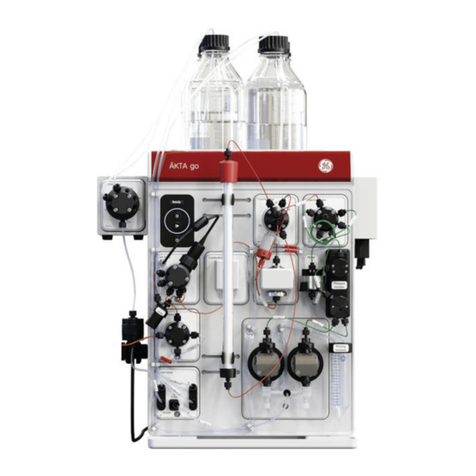
GE
GE AKTApure operating instructions
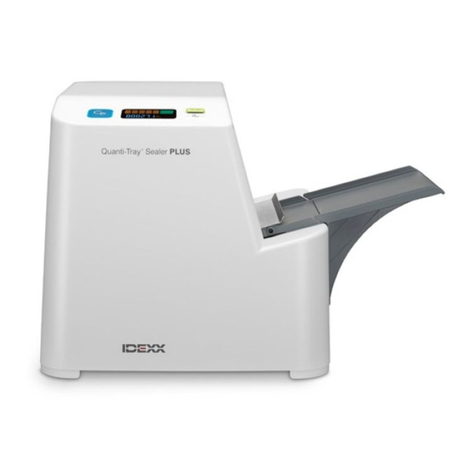
Idexx
Idexx Quanti-Tray/Legiolert manual
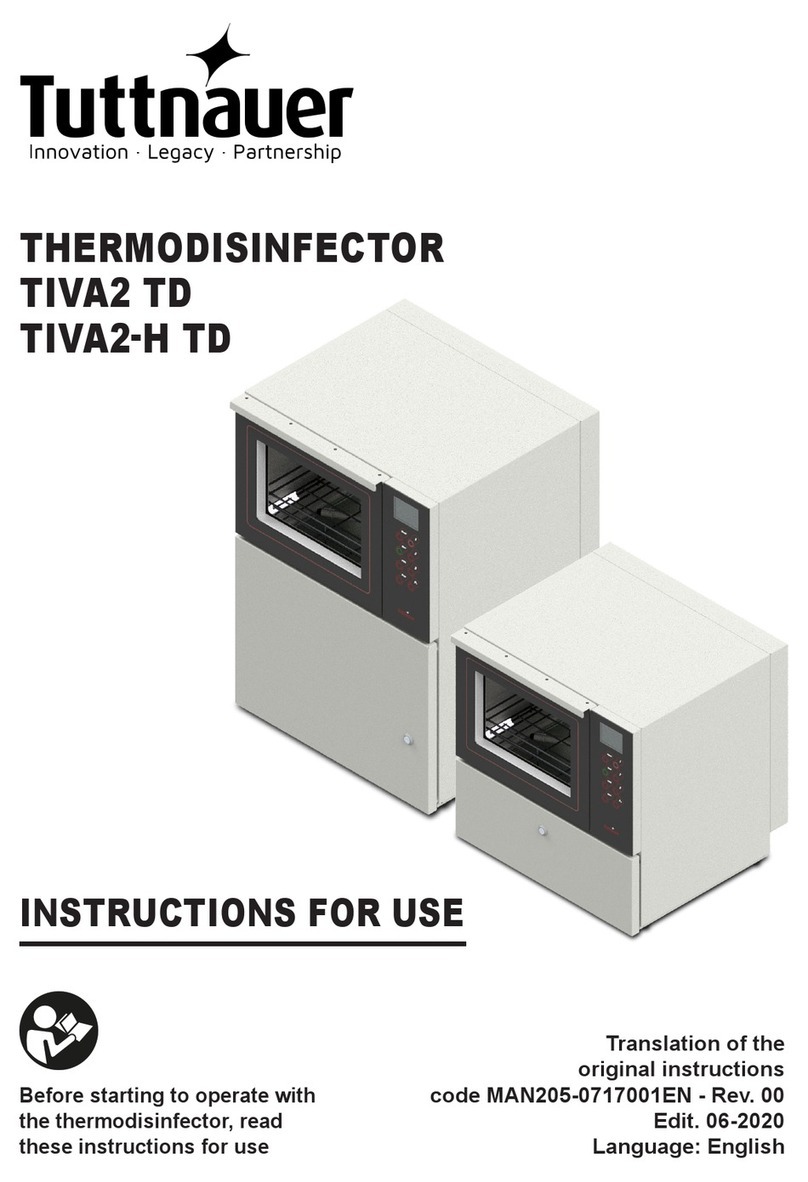
Tuttnauer
Tuttnauer TIVA2 TD Instructions for use

Thermo Scientific
Thermo Scientific Thermo Scientific Orion Star T900 Series General Settings Guide
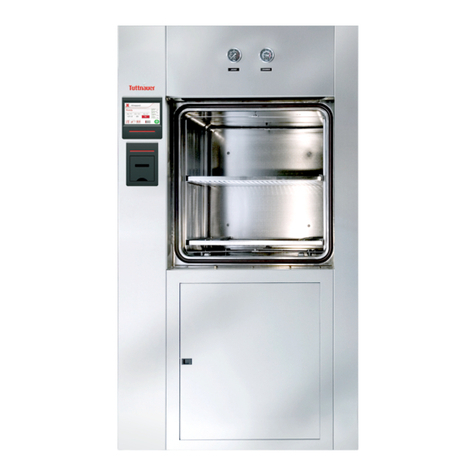
Tuttnauer
Tuttnauer 6690 STS-1V Operation & maintenance manual
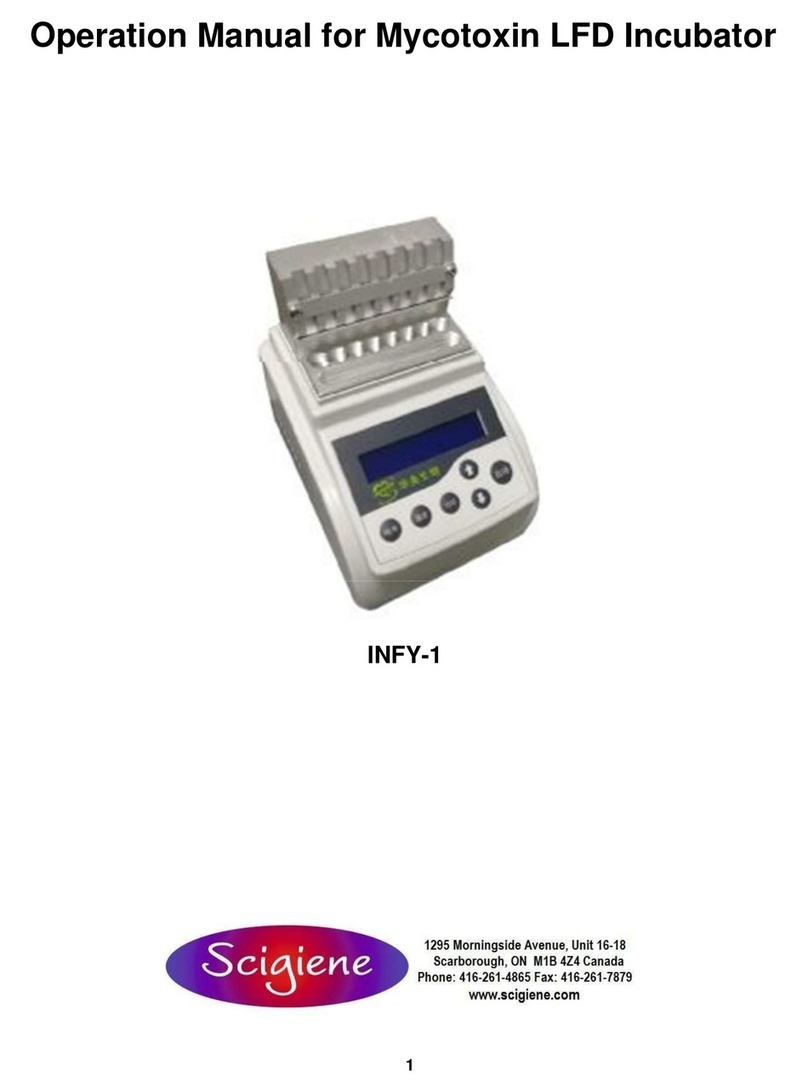
scigiene
scigiene INFY-1 Operation manual

Appleton
Appleton appSTIR instruction manual

Thermo Scientific
Thermo Scientific Ion Torrent S5 user guide
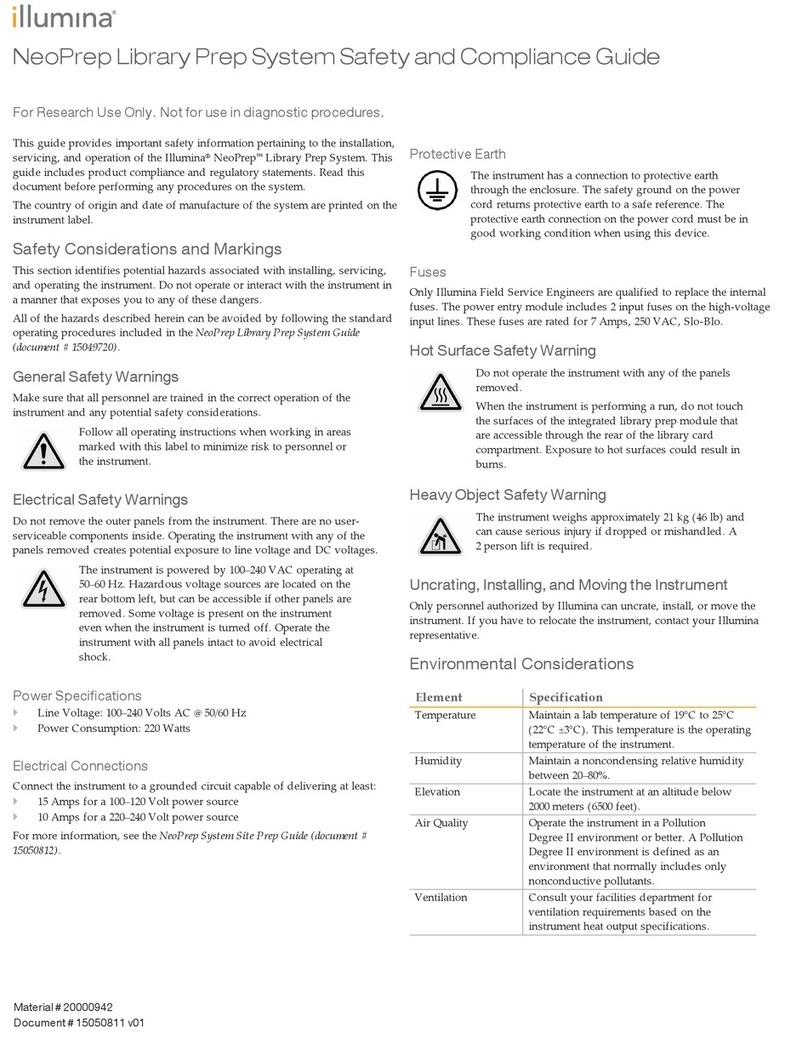
illumina
illumina NeoPrep Library Prep System Safety and compliance guide
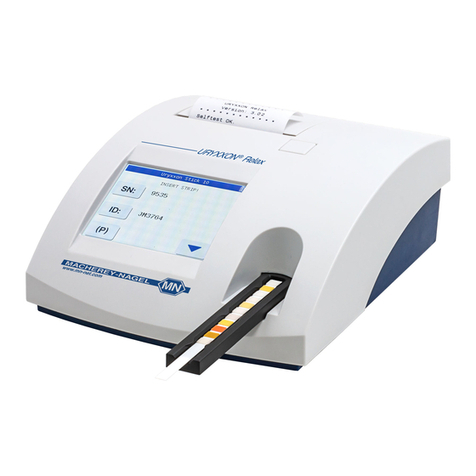
Macherey-Nagel
Macherey-Nagel URYXXON Relax manual

Teledyne
Teledyne T640 Standard operating procedure
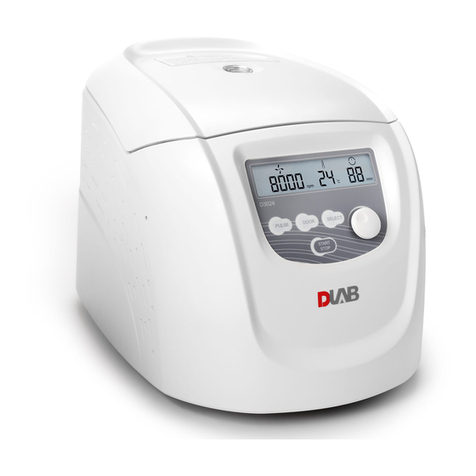
DLAB Laboratory Instruments
DLAB Laboratory Instruments D3024 user manual

